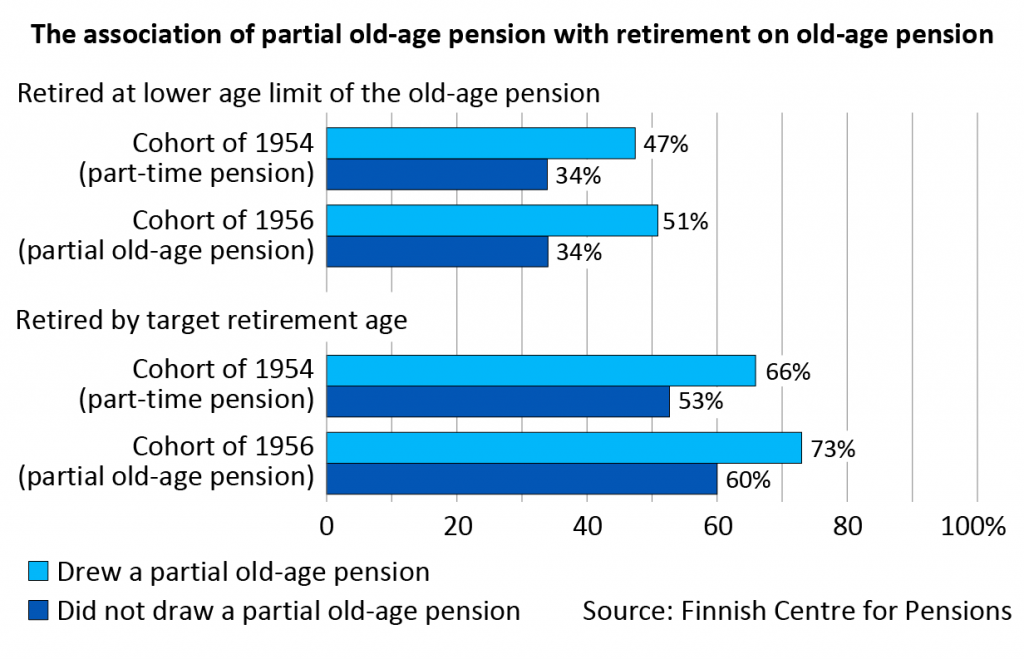People on a partial old-age pension often retire earlier than others

People on a partial old-age pension more often retire on a full-time old-age pension as soon as they reach their retirement age than do those who are not drawing a partial old-age pension. The same applies to those who draw the former part-time pension. People on an early pension also less often continue working until their target retirement age, a study by the Finnish Centre for Pensions reveals.
However, early pensions are hoped to help extend working lives by offering ways to combine work and retirement.
“The study finds large differences in the transition to old-age pension between those who have taken an early pension and those who have not. This is important information for the objective of extending working lives,” states Senior Researcher Ilari Ilmakunnas (Finnish Centre for Pensions).
Early pensions extend working lives only if they are associated with later retirement on an old-age pension.

Different population groups emphasized among recipients of early pensions
In this study, we examine the frequency, background factors and association of early pensions with retirement on the old-age pension. Early pensions refer to the partial old-age pension introduced in connection with the 2017 pension reform and its predecessor, the part-time pension.
The study shows that, in terms of which population groups typically draw an early pension, the part-time pension and the partial old-age pension are nearly the opposite of each other.
“More often than average, the recipients of the former part-time pension were women, public sector employees and university graduates. The recipients of the partial old-age pension, on the other hand, are more often men, private sector employees and have a primary or secondary education”, explains Economist Satu Nivalainen (Finnish Centre for Pensions).
Partial old-age pension more popular than the part-time pension
According to the study, the partial old-age pension is more popular than the part-time pension.
“The partial old-age pension is a flexible pension. It can be drawn without any restrictions concerning, for example, working hours and earnings. The former part-time pension demanded that the individual transfer from full-time to part-time work,” Ilmakunnas says.
The study compares the frequency of drawing an early pension among the 1954 and 1956 cohorts who work full time. The association of these two forms of early retirement to retirement on an old-age pension has not been studied much in the past in Finland or elsewhere. The peer-reviewed research article has been published in the journal Yhteiskuntapolitiikka.
Read the research article in Julkari (in Finnish with an English abstract)